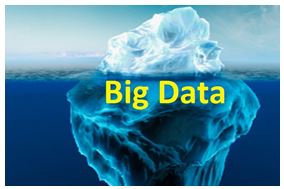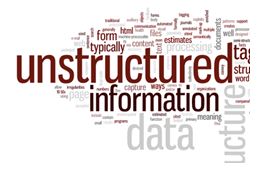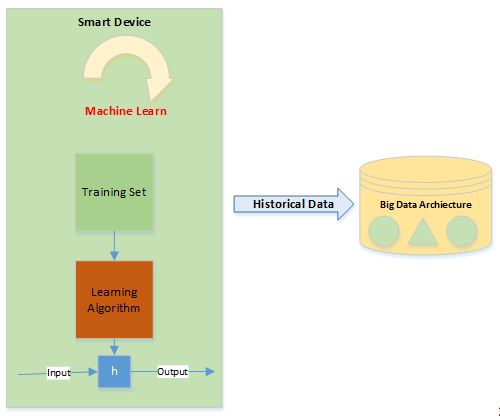|
August 2013
Article
AutomatedBuildings.com
|
[an error occurred while processing this directive]
(Click
Message to Learn More)
|
|
Big Data for Smart Buildings
Imagine the power of advanced data analytics using big
data
architecture to visualize the long term perspectives and true smart
devices that perform proactive decisions.
|
 Nirosha Munasinghe
MBusIT BSc BE
(Hons)
(Melb) Nirosha Munasinghe
MBusIT BSc BE
(Hons)
(Melb)
|
As
we ride the wave of device connectivity to the cloud delivering
a plethora of data, the “Big Data” phenomena is surfacing the market
and
revolutionizing the way we manage data. New data architecture is
forming shifting the paradigm from traditional rationale database
management tools. MapReduce, Hadoop, Chukwa, Ambari, Hive,
Zookeeper, Cassendara and Mahout are some of the fundamental
architecture driving the concept. They are transforming data
management in the Information Communication Technology (ICT) industry
with faster access to data at the right time to visualize to the right
audience. Is it time for Big Data for the BAS industry, or can BAS data
be
analyzed before the big data space, or is there a hybrid solution? This
article examines the concept of big data and examines how traditional
machine learning techniques can be used in smart devices to outline a
hybrid solution to manage data in a building automation system.

Figure 1: Big Data concepts surfacing in the market
Big
Data describes a set of complex data that is difficult to process
using traditional database management tools. The processing includes
capturing, storing, searching, sharing, transferring, analyzing and
visualization. Big Data is driven by significant growth in data sets
over the last few years due to growth in unstructured data from mobile
devices, sensing technology, wireless sensors, and social networks,
satellite images, photo/video and speech, along with the reduction in
cost of storage. The data growth has put limitations on the current
rational
database technology in obtaining the right data at the right time,
which has introduced a new wave of database architecture such as
MapReduce and Hadoop. The fundamental advantage of current big data
architectures is the ability to process unstructured data. The
traditional
database tools required structured datasets with relationships to
process the data. However architecture such as Hadoop and
MapReduce allow processing of unstructured data at high speed.
Hadoop allows big problems to be decomposed into smaller elements so
that analysis can be done quickly and cost effectively. It is a
versatile, resilient, clustered approach to managing files in big data
environment. This architecture has been a key breakthrough in
data management as unstructured data is ever increasing in our day to
day life.

Figure 2:
Unstructured information is
everywhere
[an error occurred while processing this directive]The
new big data architecture has a significant advantage for the BAS
industry. The fundamental feature of a smart building is the ability
to capture endless data from key performing buildings resources using
sensors, wireless and wired networks. The data is transferred to
a central processing unit to analyze to take proactive action and then
visualize the data for an audience. The rapid growth of data in a
building has driven the dashboard industry over the last two years with
many players entering the market with various data visualizing panels.
As the growth of data increases the big data architecture is a must for
the BAS industry to process unstructured data in an efficient manner.
However, players need to be careful to avoid the assumption that big
data architecture is the only solution in the future for data handling
for a smart building. The BAS industry is in a domain where data is
captured from key resources to a smart device before it is processed to
a database or data warehouse. The smart device can perform much
more functionality than its current capabilities. It can be argued that
the word ‘smart’ is the key buzzword that has driven the ICT over the
last decade. However are devices really smart? Let’s examine a BAS
smart controller. It is currently capturing input data from a sensor
network and then outputs action according programmed logic. The data is
transferred to a database for further analysis and mining. Is the
device really smart? No, the BAS controller has been performing
such
functions for over 20 years. Not much has changed in the
implementation.
Changes are required to take advantage of cheap flash technology
available to store the raw data in the device to compute analysis on
the fly and take proactive action on the key resources it is monitoring
or controlling. Artificial Intelligence technology such as neural
networks, fuzzy logic and data mining techniques are proven solutions
that can be used in the device to machine learn and make proactive
decisions to improve the performance of the resource. For example the
most fundamental theory behind a control system is the operation of the
PID
loop to control an output according to the input and set point that
requires
user input to tune its parameters. However many integrators or
users lack the technical skills to tune these parameters failing its
functionality and more importantly wasting the energy resources of a
building. The product can have brilliant features but without its core
functionality due to user error there is a fundamental problem. A
clear solution is to implement an adaptive PID control loop in the
device where it learns from past data to adjust its parameter without
user intervention. Historical data in the device can be used to achieve
such results without the need to send data to a large data warehouse
application. Similarly learning applications can be implemented in the
device to action energy usage patterns and make proactive decisions on
the local device for it to be a truly smart device and a true
distributed
system. The historical data from the device can be exported to an
external
application to use big data architecture techniques to perform advance
analytics to observe the long term perspective. We have enough
capacity and processing power in our smart devices to make short term
decisions locally to act faster without being reliant on external
applications.

Figure 3: Hybrid Solution to manage data in
BAS industry
The
vendors in the BAS and energy markets need to plan their road map
to big data architecture now. However, most vendors have proven smart
devices on their platform which can be used to perform many of the data
analysis locally using machine learning techniques and to provide
proactive feedback to the energy resources it is monitoring and
controlling. Imagine the power of advanced data analytics using big
data
architecture to visualize the long term perspectives and true smart
devices that perform proactive decisions.
footer
[an error occurred while processing this directive]
[Click Banner To Learn More]
[Home Page] [The
Automator] [About] [Subscribe
] [Contact
Us]
 Nirosha Munasinghe
Nirosha Munasinghe